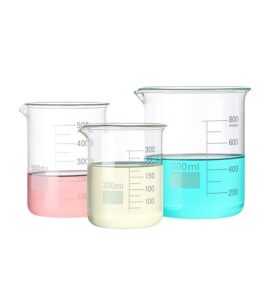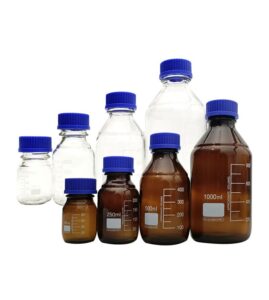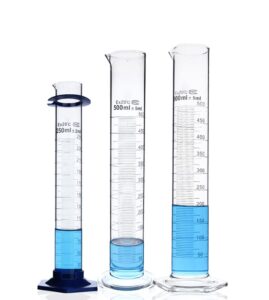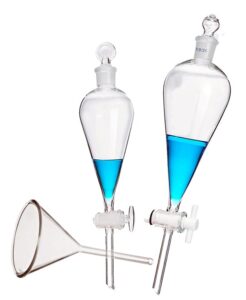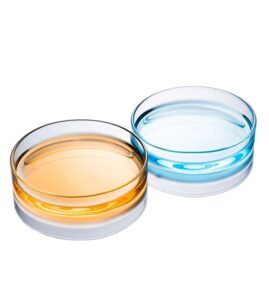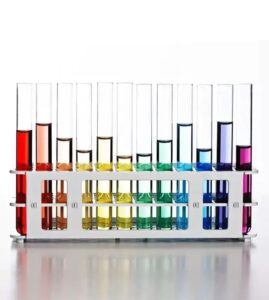Calibrating volumetric glassware is a critical step to ensure accurate measurements in the laboratory. In this comprehensive guide, we will provide specific calibration methods and a detailed example to serve as a step-by-step operating manual. Let’s dive in!
Preparation Phase
Before starting the calibration process, thorough preparation is essential. Here’s what you need to do:
- Gather Equipment: Collect the necessary equipment, including the volumetric glassware to be calibrated, a high-precision balance, a suitable thermometer, distilled water, and any additional apparatus specific to your chosen calibration method.
- Safety Measures: Prioritize safety by wearing appropriate personal protective equipment (PPE) such as gloves, safety goggles, and a lab coat. Ensure you follow all relevant safety guidelines to minimize risks during the calibration process.
- Cleaning and Drying: Clean the volumetric glassware meticulously using suitable cleaning agents to remove any residues or contaminants that could affect the calibration. Rinse the glassware with distilled water and ensure it is completely dry before proceeding.
Calibration Methods and Process
There are various calibration methods available for volumetric glassware. Let’s explore a few common techniques and provide a detailed example of the gravimetric method.
Gravimetric Method:
The gravimetric method is widely used for calibrating volumetric glassware. Follow these steps to calibrate a 100 mL volumetric flask using the gravimetric method:
- Tare the Balance: Start by taring the balance with an empty, dry container to obtain the tare weight.
- Add Distilled Water: Carefully fill the volumetric flask with distilled water, ensuring the meniscus aligns precisely with the calibration mark. Note the water temperature using the thermometer.
- Weigh the Flask: Place the filled volumetric flask on the balance and record its weight accurately.
- Calculate the Volume: Subtract the tare weight from the weight of the filled flask to obtain the mass of the water. Convert the mass to volume using the known density of water at the measured temperature. Compare the obtained volume with the calibrated volume to determine any necessary correction factors.
- Repeat the Process: Repeat the calibration process multiple times to ensure consistency and calculate an average correction factor.
Volumetric Standard Method:
The volumetric standard method involves using certified reference materials (CRMs) or primary standards to compare and verify the accuracy of the glassware. Follow these steps to calibrate a burette using this method:
- Select the Volumetric Standard: Choose a suitable CRM or primary standard solution with a known concentration.
- Prepare the Burette: Clean the burette thoroughly and rinse it with the standard solution to ensure there are no residues or contaminants.
- Fill the Burette: Fill the burette with the standard solution, making sure there are no air bubbles trapped within. Ensure the meniscus aligns precisely with the calibration mark.
- Titrate: Use a suitable indicator or detection method to determine the endpoint or equivalence point of the titration. Record the volume dispensed from the burette.
- Calculate the Correction Factor: Compare the dispensed volume with the known concentration of the standard solution to calculate the correction factor for the burette.
- Repeat and Average: Repeat the calibration process multiple times, calculating the average correction factor to ensure accuracy.
Post-Calibration Considerations
After completing the calibration process, there are important factors to consider:
- Documentation: Record all calibration details, including the date, calibration method, correction factors, observations, and any other relevant information. Proper documentation is crucial for traceability and maintaining a calibration history of the glassware. Include details such as the calibration equipment used, the person performing the calibration, and any specific conditions or deviations observed during the process.
- Labeling: Clearly label the calibrated glassware with the calibration date, the next calibration due date, and any additional information required by your laboratory’s protocols. Proper labeling ensures that the glassware is easily identifiable and prevents accidental use beyond its calibration validity period.
- Storage and Handling: Store the calibrated glassware in a designated area or cabinet that protects it from damage, contamination, and environmental factors. Handle the glassware with care to maintain its calibration integrity and avoid any potential damage that may affect future measurements.
Dealing with Calibration Failures
In cases where the calibration process indicates that the glassware does not meet the required accuracy criteria, consider the following steps:
- Investigation: Conduct a thorough investigation to identify the potential causes of the calibration failure. Inspect the glassware for any visible defects, signs of damage, or irregularities that may have affected the calibration results.
- Troubleshooting: If possible, troubleshoot the issue by examining the calibration process and checking for any procedural errors or deviations. Ensure that the calibration equipment is functioning correctly and that the calibration method was properly executed.
- Re-Calibration or Repair: Depending on the severity of the calibration failure and the nature of the glassware, you may opt to recalibrate the glassware using the same or an alternative calibration method. If feasible, repair any identified issues that may have contributed to the calibration failure before recalibrating.
- Replacement: In some cases, if the glassware cannot be repaired or recalibrated to meet the required accuracy, it may need to be replaced. Dispose of the faulty glassware following proper disposal protocols and acquire a new piece for accurate volume measurements.
Remember to document any calibration failures, investigations, and actions taken to address the issues. This information is valuable for future reference and quality control purposes.
Questions Related to “How do you calibrate volumetric glassware?”
To further explore the topic of calibrating volumetric glassware, let’s address some commonly asked questions:
Why is it necessary to calibrate volumetric glassware?
Calibrating volumetric glassware is essential because it ensures accurate volume measurements. Glassware may have manufacturing variations or wear and tear over time, leading to deviations from the calibrated values. Calibration helps correct these deviations, ensuring reliable and precise measurements.
How often should volumetric glassware be calibrated?
The frequency of calibration depends on various factors, including the type of glassware, frequency of use, and laboratory requirements. In most cases, it is recommended to calibrate volumetric glassware annually or after a specific number of uses. However, critical applications or high-precision work may require more frequent calibration, such as quarterly or even monthly.
Can volumetric glassware be calibrated in-house?
Yes, volumetric glassware can be calibrated in-house if the laboratory has the necessary equipment and expertise. However, it is crucial to follow established calibration procedures and quality control measures to ensure accurate results. Alternatively, laboratories can seek the services of accredited calibration laboratories to perform the calibration.
Are there alternative methods to gravimetric calibration?
While gravimetric calibration is the most commonly used method, there are alternative techniques available. One such method is the use of volumetric standards, where calibrated reference standards are used to compare and verify the accuracy of the glassware. Another method involves utilizing automated calibration systems that employ advanced technology to measure and calibrate volumetric glassware.
More Related Questions
Let’s address a few more questions to deepen our understanding of calibrating volumetric glassware:
What are the potential sources of error in volumetric glassware calibration?
During calibration, several factors can contribute to errors, including variations in temperature, meniscus reading, air bubbles, evaporation, and improper cleaning. It is important to carefully control these factors and follow standardized procedures to minimize errors and obtain accurate calibration results.
How can one ensure the traceability of calibration standards?
Traceability of calibration standards refers to the establishment of a documented chain of measurement uncertainties from the glassware being calibrated to a recognized standard. To ensure traceability, laboratories should use certified reference materials (CRMs) or primary standards that are traceable to national or international measurement standards.
Can volumetric glassware be recalibrated if it fails the initial calibration?
If volumetric glassware fails the calibration process, it should be removed from service and evaluated to determine the cause of failure. In some cases, the glassware may be repaired, recalibrated, or replaced, depending on the severity of the deviation. It is crucial to maintain a robust calibration system and follow proper documentation procedures to track and address calibration failures.
Conclusion
Calibrating volumetric glassware is a critical process for achieving accurate measurements in the laboratory. By following the specific calibration methods, conducting thorough preparation, and addressing post-calibration considerations, you can ensure reliable and precise results.
Remember to prioritize safety during the calibration process and maintain proper documentation and labeling for traceability. In cases of calibration failures, investigate the causes, troubleshoot where possible, and take appropriate actions such as re-calibration, repair, or replacement.
With this comprehensive guide, you now have a step-by-step operating manual to successfully calibrate volumetric glassware and maintain accuracy in your laboratory measurements.


